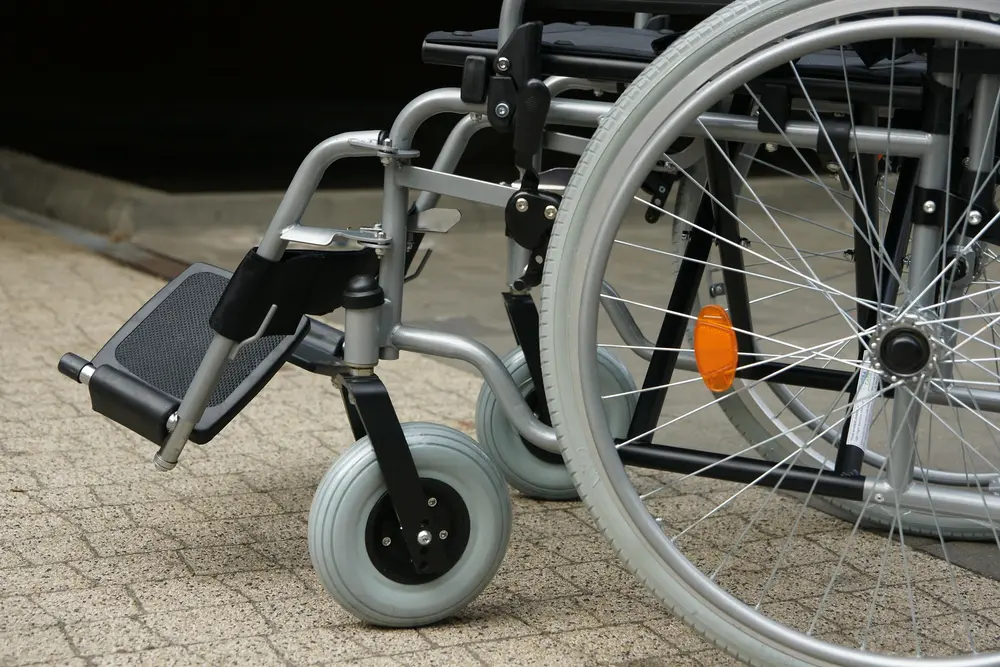Ankylosing spondylitis is an inflammatory autoimmune disorder that can result in chronic pain and stiffness, and it may affect your ability to work.
You can apply for Social Security disability benefits if you have the disease, but what can you do if you are denied? In this article we’ll take a closer look at what this condition is, and what to do if you are denied benefits.
What Is Ankylosing Spondylitis?
Ankylosing spondylitis is a type of inflammatory arthritis that affects the spine and large joints. It is more common in men than women. It usually begins in early adulthood.
Over time, the disease may cause some of the vertebrae in the spine to become fused. This can result in reduced spinal flexibility and a hunched-over appearance.
What Are the Symptoms of Ankylosing Spondylitis?
Early warning signs of this condition include pain and stiffness in the lower back, similar discomfort in the hips, and neck pain/fatigue. The pain often improves with physical activity and worsens with inactivity.
Areas most commonly impacted include the following:
- Joint between the base of the spine and pelvis
- Vertebrae in the lower back
- Areas where tendons and ligaments attach to bones, mainly in the spine – but sometimes along the back of the heel
- Cartilage between the breastbone and ribs
- Hip and shoulder joints
Inflammation can also occur in the eyes. You might experience redness, severe light sensitivity, or blurred vision.
What Causes Ankylosing Spondylitis?
The cause of ankylosing spondylitis is currently unknown, but it appears to be genetic in nature. Individuals who possess the HLA-B27 gene are more likely to develop the disease. However, not everyone with the gene will develop it.
What Complications Might Occur with Ankylosing Spondylitis?
As the spinal vertebrae fuse, this can render the spine stiff and inflexible. The rib cage can also become rigid, affecting breathing and lung capacity.
Eye inflammation, compression fractures, and heart problems are other possible complications of ankylosing spondylitis.
How Is Ankylosing Spondylitis Treated?
Although ankylosing spondylitis can be debilitating, fortunately several treatment options are available. Non-steroidal anti-inflammatory drugs (NSAIDs) are often used to treat pain, inflammation, and stiffness.
If NSAIDs don’t relieve the symptoms, a biologic medication, such as tumor necrosis factor (TNF) blocker or an interleukin-17 (IL-17) inhibitor, may be prescribed. The FDA has approved five TNF blockers and two IL-17 inhibitors to treat ankylosing spondylitis:
- Adalimumab (Humira)
- Certolizumab pegol (Cimzia)
- Etanercept (Enbrel)
- Golimumab (Simponi)
- Infliximab (Remicade)
Physical therapy is often part of the treatment regimen as well because it can help with strength and flexibility. Exercises prescribed often include range-of-motion, stretching, abdominal, and back exercises.
Are Individuals with Ankylosing Spondylitis Eligible for Disability Benefits?
While proper treatment of ankylosing spondylitis can minimize the negative effects of this disease, in severe cases, spinal motion may be limited.
One such outcome: the spine may become fixed in a flexed position. The resulting limitations in mobility may make it too painful or even impossible to work. If this is the case, the individual may be eligible for Social Security disability benefits
In certain situations, Social Security will grant benefits to those who meet certain criteria set forth in the Listings of Impairments:
- Ankylosis (fixation) of the dorsolumbar or cervical spine as shown by appropriate medically acceptable imaging and measured on physical examination at 45° or more of flexion from the vertical position (zero degrees)
- Ankylosis (fixation) of the dorsolumbar or cervical spine as shown by appropriate medically acceptable imaging and measured on physical examination at 30° or more of flexion (but less than 45°) measured from the vertical position (zero degrees); and Involvement of two or more organs/body systems, with at least one of the organs/body systems affected to a moderate level of severity.
If you don’t meet either of the above requirements, you may still be able to qualify for disability benefits if you prove that you cannot perform what is called your “past relevant work.” If you can prove this, then the government must identify other jobs that you can do, which exist in significant numbers in the national economy.
To determine whether or not you can perform your past relevant work or any other work, Social Security must determine what is your Residual Functional Capacity (RFC). That is, the most you can do given the limiting effects of your impairments.
These may include physical restrictions, environmental limitations and/or mental capacity limitations. And certainly pain and fatigue can be critical symptoms that impact your functioning. Also, although not required, an opinion from your medical provider may make the difference between winning and losing your claim.
What Can I Do If the SSA Denies Benefits for Ankylosing Spondylitis?
Ankylosing spondylitis can legitimately impact your ability to work. If Social Security disability benefits are denied, the best course of action is to appeal the decision. We can help you appeal.
If you need help filing a disability claim for ankylosing spondylitis, or if your disability claim was denied, contact Richard I. Feingold & Associates, P.C. We have a proven track record of success that can help maximize your chances of receiving SSA disability benefits.
Author:
Richard I. Feingold
Richard I. Feingold & Associates, P.C.
Personal Injury & Social Security Disability
Stay Connected:
Sign up for our newsletter
Like us on Facebook







